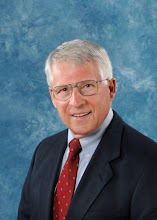I asked my CARRI colleagues for their thoughts surrounding what the Community and Regional Resilience Institute has learned over the past 18 months from our research, our national research associates, our partner communities and our wider social network. The responses were very interesting and came as both “lessons learned” and as “resilience nuggets.” I would like to share some of them over the next several weeks. This first set comes from Dr. Tom Wilbanks, CARRI Research Director and Senior Corporate Fellow at Oak Ridge National Laboratory. Tom’s summary:
Community resilience is far more than traditional emergency preparedness. It means clarifying what a community means and engaging the entire range of community members in considering how to protect those functions and values.
A key is catalyzing and facilitating processes by which communities understand themselves, their values and priorities, their resources and complementarities, and their intentions if they are faced with a disaster.
Community resilience starts with individual families, organizations, and neighborhoods. If they are not resilient, then the community is not resilient.
Resilience is a concept that can catalyze new kinds of community interaction – and action.
Keys to such interaction and action include sustained leadership and communication (both messages and mechanics).
The focus on resilience interaction and action should be on community improvement, not just community protection: prepare to recover better, not just respond.
Resilience is a continuing process, not just a condition to be attained at a particular time. In order to keep the process going, it must be imbedded in continuing institutional roles, missions, and networks – related both to local action and to local knowledge.
One key to this process is iterating the planning process through time, including practicing response plans and using the practices to identify needs to reduce vulnerabilities.
Both the private sector and non-governmental, non private-sector organizations have more profound roles to play in assuring and sustaining resilience than traditional emergency preparedness has realized.
Strengthening social bonds among the various parts of the community is one of the most important aspects of resilience.
Equally important is recognizing and taking full advantage of the strengths of all parts of the community, working together.
Such broadly participative, representative approaches to realizing community resilience are not theoretical pipedreams. They can be done in the real world, in real communities with real people, and if they are done right they can inspire considerable community cohesion and enthusiasm.
Pretty interesting stuff!
Thursday, March 12, 2009
Subscribe to:
Post Comments (Atom)

No comments:
Post a Comment